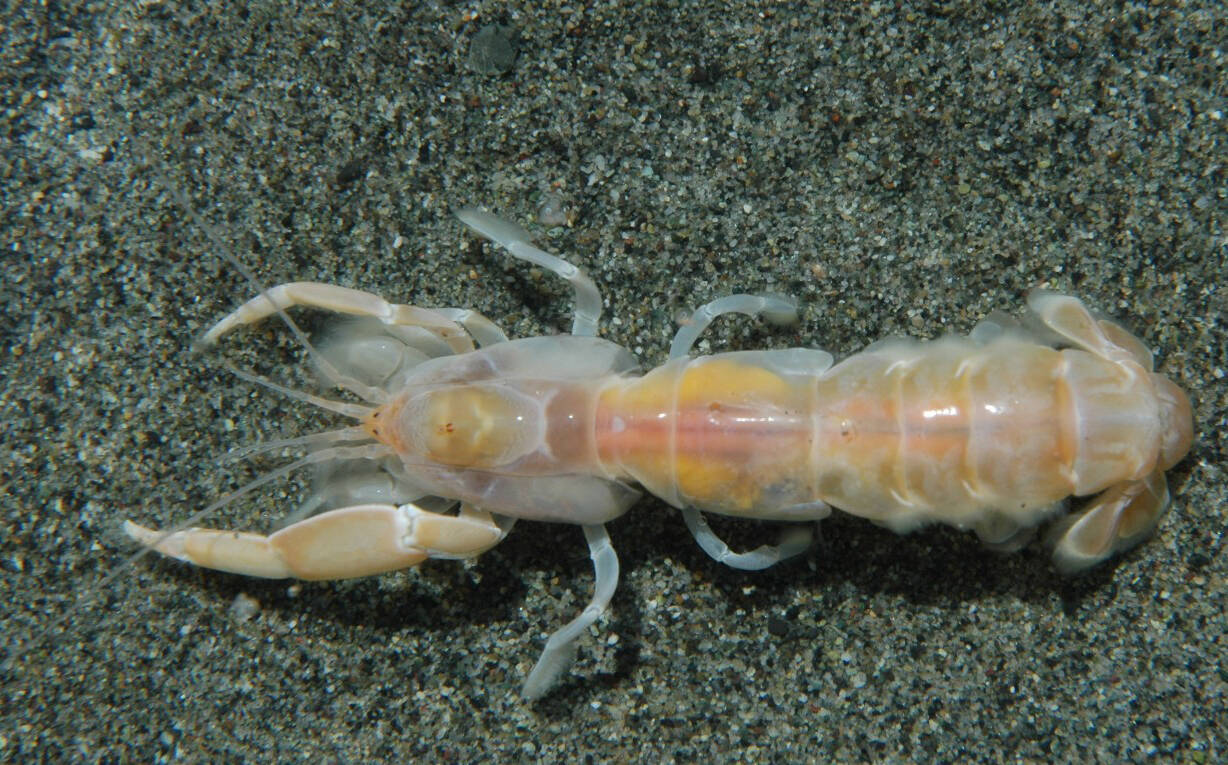Halloween has come and gone, but within the waters of the Puget Sound exists a spooky and translucent critter — the ghost shrimp.
Ghost shrimp are about 1.5 inches in length, and have pale and fragile bodies that are so translucent that their organs are visible through their shells.
“They’re translucent because they have very little calcification in their exoskeleton,” said Gregory Jensen, professor at the School of Aquatic and Fishery Sciences at UW.
Jensen mentioned how crabs have lots of calcium in their exoskeleton for protection, while ghost shrimp spend their lives underground protected by their burrows.
“Their legs and claws are calcified as they need to be strong enough to dig with, so those are white in color and not translucent,” said Jensen.
Ghost shrimp create deep burrows through digging with their legs and claws, which mixes and softens layers of sand and mud, also known as bioturbation. The bioturbation transports oxygen and nutrients to deeper sediment layers, where vital resources normally wouldn’t be able to penetrate to animals that live deep under the mud.
Excessive bioturbation, on the other hand, can turn mud into quicksand and cause anything on the surface to sink, according to the Department of Ecology. Their burrowing process allows for food particles to swirl around. These floating snacks attract pea crabs, segmented worms and small fish. Small mounds of sand on beaches could be openings of the busy burrows of ghost shrimps.
In the intertidal mud of North and Central Puget Sound, gray whales dig large feeding pits to snack on bay ghost shrimp, or Neotrypaea Californiensis. Bay ghost shrimp are commonly found on the outer coast and in the Puget Sound, acting as prey for some species of fish and shore birds, while being used by fishermen as bait for steelhead.
“I actually ID’d some gray whale stomach contents for another researcher a couple of years ago and they were mostly ghost shrimp shells/claws,” said Mugdha Flores, Communications Manager for the Department of Ecology. “Ghost shrimp also consume detritus (particles of dead organic material like plants and animals) and cycle nutrients from this dead material back into the food web.”
While they are called shrimp, they are more closely related to crabs, according to the Department of Ecology, which began sampling the ghost shrimp population in 1989.
Several sampling stations include Admiralty Inlet; Central; Hood Canal; San Juan Archipelago; South Sound; Strait of Georgia; Strait of Juan de Fuca; and Whidbey Basin.
“We really don’t encounter very many ghost shrimp, but that doesn’t mean they aren’t there in higher numbers,” said Flores, who said the department samples small sections of subtidal sediments so they probably miss bay ghost shrimp. “We also only have 50 stations Sound-wide, so in any given region, there isn’t great spatial coverage.”
Talk to us
Please share your story tips by emailing editor@kentreporter.com.
To share your opinion for publication, submit a letter through our website https://www.kentreporter.com/submit-letter/. Include your name, address and daytime phone number. (We’ll only publish your name and hometown.) Please keep letters to 300 words or less.

